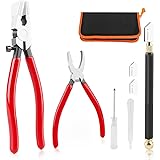Unlocking Ingenuity: The Art of Homemade Inventions and Practical Engineering
The accompanying video visually demonstrates three compelling instances of homemade inventions, showcasing the remarkable creativity and resourcefulness inherent in the maker community. These creations often emerge from a desire to solve everyday problems or to simply explore the boundaries of practical engineering with readily available resources.
The spirit of innovation, particularly in the realm of DIY projects, is a foundational element of human progress. This article delves into the underlying principles, the intricate processes, and the expansive potential that define these ingenious homemade inventions, offering insights for both aspiring and seasoned creators.
The Core Tenets of DIY Innovation
At its heart, a homemade invention begins with meticulous problem identification. Engineers and hobbyists alike recognize that every challenge presents an opportunity for a novel solution. This critical initial phase involves observing inefficiencies or unmet needs in daily life.
Consequently, the subsequent step often involves resourcefulness, leveraging existing materials or components in unconventional ways. This approach minimizes acquisition costs and promotes a sustainable design ethos, a hallmark of effective homemade inventions. Consider, for instance, a common household issue, such as maintaining optimal humidity levels in a confined space. An inventor might conceptualize a system utilizing repurposed plastic containers and a simple wick mechanism to create a passive humidifier.
From Concept to Prototype: The Iterative Process
The journey from a rudimentary idea to a functional homemade invention is rarely linear. It typically involves an iterative design process, where initial concepts are translated into tangible prototypes. These early versions serve as critical proof-of-concept models, allowing for physical evaluation and identification of design flaws.
Furthermore, prototyping is essential for validating the underlying engineering principles. Imagine if an individual aimed to construct a low-cost, automated plant watering system. The first prototype might only test the water delivery mechanism, perhaps using a basic peristaltic pump and a microcontroller. Subsequent iterations would then integrate sensor feedback for soil moisture, refining the system’s efficiency and autonomy.
Engineering Principles in Homemade Design
Despite their often humble origins, effective homemade inventions frequently embody sophisticated engineering principles. Understanding basic mechanics, material science, and even rudimentary electronics is pivotal for transforming a concept into a robust solution. The choice of materials, for example, directly impacts the invention’s durability, weight, and overall performance.
For instance, constructing a small, portable wind turbine as a homemade invention requires an understanding of airfoil dynamics and rotational mechanics. The rotor blades’ design, the generator’s coupling, and the structural integrity of the mast are all critical considerations. This application of amateur engineering showcases a tangible grasp of scientific phenomena.
Material Selection and Functional Design
The art of material repurposing is central to many successful homemade inventions. Utilizing salvaged components from discarded appliances or construction off-cuts not only reduces waste but also necessitates creative problem-solving. Each material possesses unique properties—tensile strength, thermal conductivity, electrical resistance—that must be matched to the invention’s functional requirements.
Consider the design of a simple, ergonomic tool handle crafted from layers of recycled cardboard and adhesive. This seemingly basic homemade invention involves an understanding of composite materials and load distribution. Consequently, the functional design must prioritize user comfort and operational efficiency, ensuring the invention serves its intended purpose effectively without causing undue strain.
Cultivating a Maker Mindset for Practical Solutions
The maker culture fosters an environment of continuous learning and experimentation, which is vital for developing innovative solutions. A willingness to experiment, to embrace failure as a learning opportunity, and to consistently refine designs are hallmarks of individuals who excel at creating homemade inventions.
This mindset encourages a deeper engagement with the world around us, transforming passive consumption into active creation. It underscores the belief that complex problems can often be addressed with elegant, practical applications of existing knowledge and materials. The three homemade inventions showcased in the video above exemplify this profound dedication to practical ingenuity.







